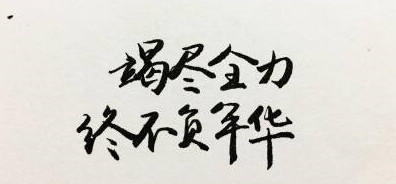 摘要:
Nothingserioushapp ened,didit?什么事情也没有发生,对吗?Everythingisready,isn'tit?一切准备就绪了,不是吗?四、当陈述部分的谓...
摘要:
Nothingserioushapp ened,didit?什么事情也没有发生,对吗?Everythingisready,isn'tit?一切准备就绪了,不是吗?四、当陈述部分的谓... Nothing serious happened, did it? 什么事情也没有发生,对吗?
Everything is ready, isn't it? 一切准备就绪了,不是吗?
四、当陈述部分的谓语动词是am的肯定形式时,附加疑问句的谓语动词用aren't,而不用am not;当陈述部分的谓语动词为am not时,附加疑问句的谓语仍用am.例如:
I am five years younger than you, aren't I? 我比你小五岁,不是吗?

I am not late, am I? 我没有迟到,对吗?
五、当陈述部分带有few, little, hardly, scarcely, rarely, seldom, never, nowhere, nothing, no one, nobody等表示否定或半否定意义的词时,附加疑问句的动词用肯定形式.例如:
The old man can hardly read, can he? 这位老人不识字,对吗?
Little food has been left, has it? 吃的东西几乎没剩下,是吗?
He has few good friends, has he? 他几乎没有要好的朋友,是不是?
六、当陈述句部分带有否定前缀的词时,此陈述句当作肯定句, 其后的附加部分用否定形式.例如:
The students were impolite, weren't they? 那些学生没有礼貌,不是吗?
It's illegal to drive a car without a license, isn't it? 没有驾照开车是违章的,不是吗?
※ 含有否定含义的词在陈述部分作动词的宾语时,其反意疑问句用肯定结构,也可以用否定结构.例如:
You got nothing from him, did you? 你从他那儿什么也没得到,是吗?
七、如果陈述句是主从复合句而主句的谓语是动词I(we) + think, believe, suppose, imagine, reckon, fancy等词时,附加部分应与从句中的谓语在时态上保持一致.例如:









